TechRadar Verdict
Asus ROG Phone 2 looks like a solid sequel and is undoubtedly a great gaming device, but if you’re looking to use it as your daily driver, you’ll be hard-pressed to compromise on certain factors like its large profile and weight.
Pros
- +
Large and vivid AMOLED screen
- +
Smooth 120Hz refresh rate
- +
Maxed-out performance
- +
Unprecedented battery life
- +
Dual front-firing speakers
Cons
- -
Feels heavy in the hand & pocket
- -
Scarcity of decent high-res Android games
Why you can trust TechRadar
Asus ROG Phone 2, the successor to the gaming-centric ROG Phone from last year, is here. The first iteration was as great a gaming phone as it was a regular handset, but the ROG Phone 2 is bigger and packs in more power than ever.
While the jury is still out on whether we need gaming smartphones, coupled with the slow development in the mobile gaming industry, the Asus ROG Phone 2 continues to cater to the existing niche.
Weight: 240g
Dimensions: 170.99 x 77.6 x 9.78mm
OS: Android 9.0 Pie
Screen size: 6.59-inch, 120Hz refresh rate
Resolution: 2340 x 1080 (FHD+)
CPU: Snapdragon 855 Plus
GPU: Adreno 640
RAM: 8GB/12GB
Storage: 128/512GB
Battery: 6,000mAh
Rear camera: 48MP + 13MP
Front camera: 24MP
And enthusiasts should look at it like a gaming device that can provide an ultimate experience when it comes to all things gaming.
It’s not just the ROG Phone 2 itself either, as the smartphone comes with a bunch of cool accessories aimed squarely at enhancing the gaming experience by a considerable margin over rival handsets such as the Razer Phone 2 or Red Magic 3.
Price and availability
Asus ROG Phone 2 in India starts at Rs 37,999 for the base variant with 8GB RAM and 128GB storage whereas the maxed-out version with 12GB RAM and 512GB storage is priced at Rs 59,999.
Asus will ship an 18W Quick Charge 4.0 adapter with the base variant of the ROG Phone 2 along with the Aero case. Buyers who go for the top-end model will be provided with a 30W ROG fast charging adapter, Aero case, and AeroActive Cooler II in-the-box.
Design

The Decepticon-looking design returns on the ROG Phone 2 flush with Asus’ aerodynamic system highlighted by the copper grill. The chassis is made of aluminum with Gorilla Glass 6 on the back.
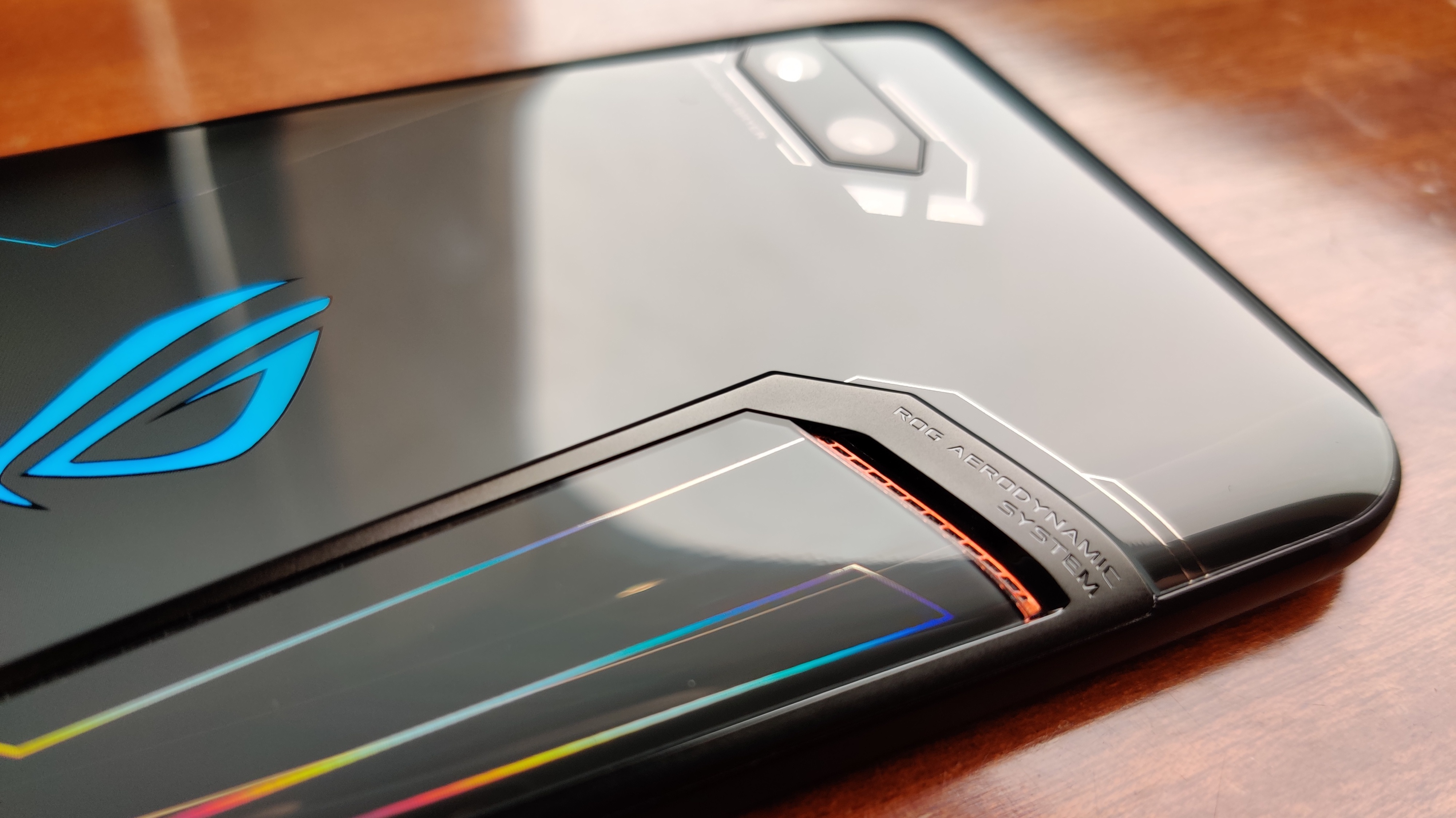

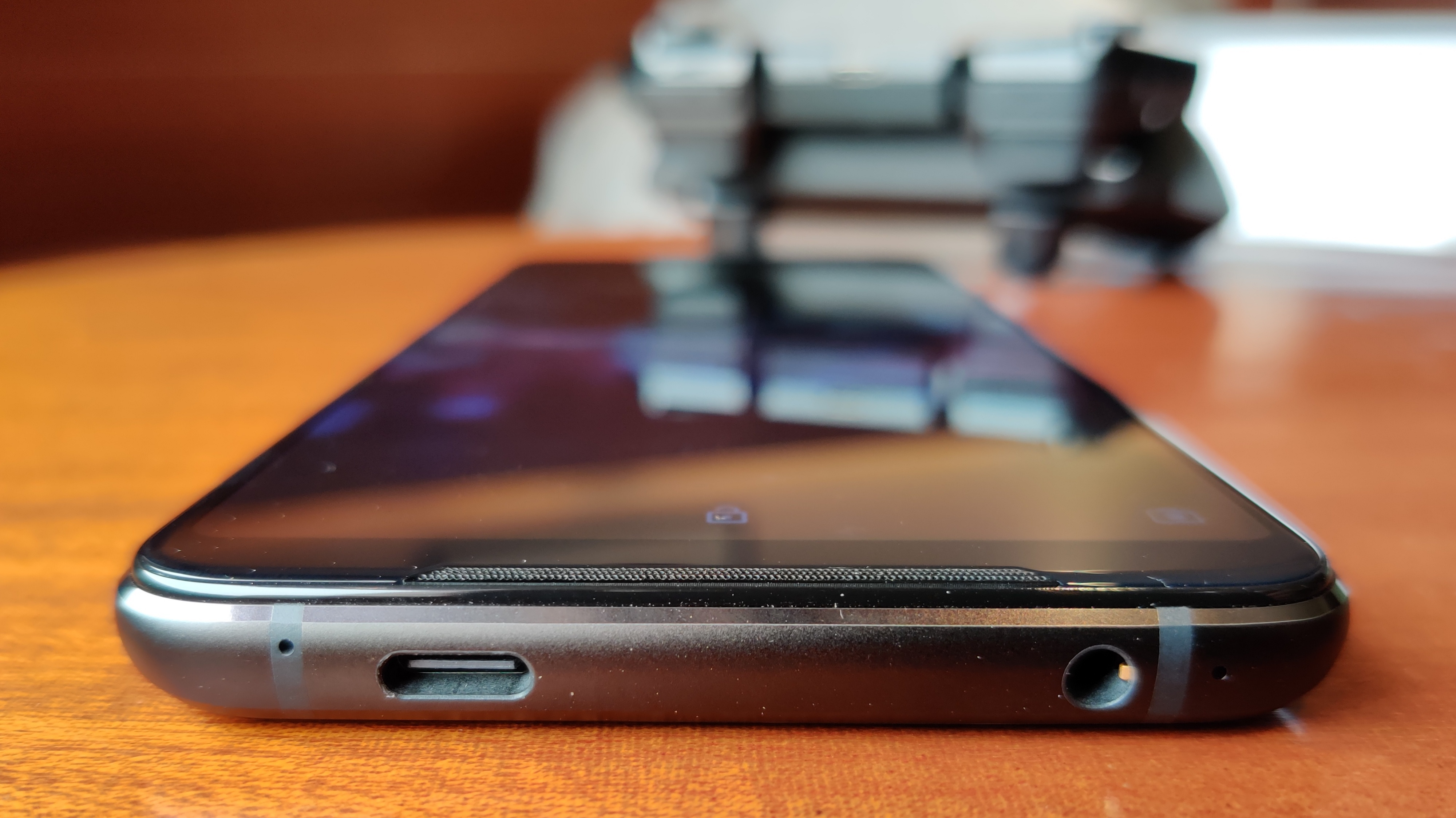
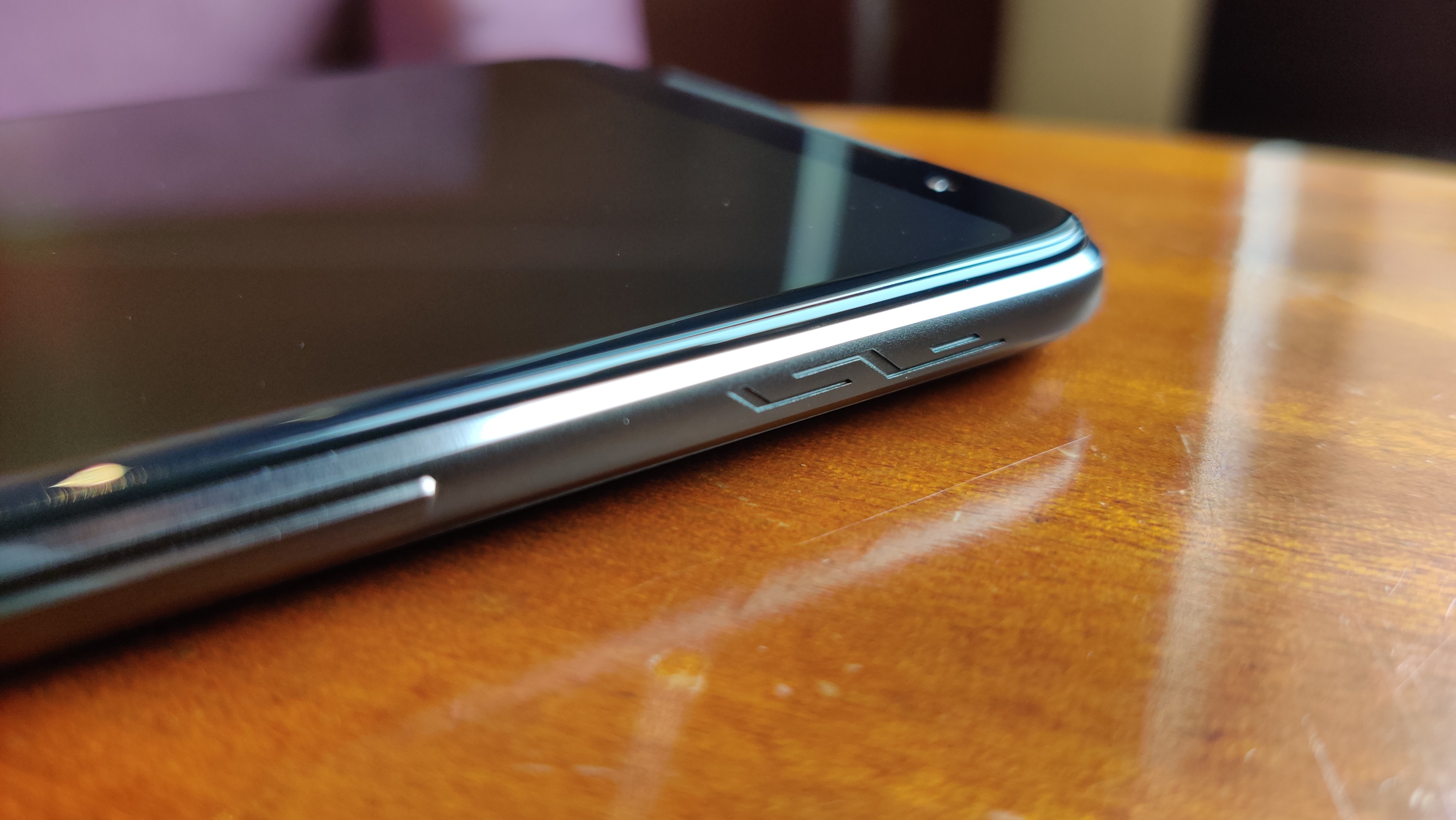
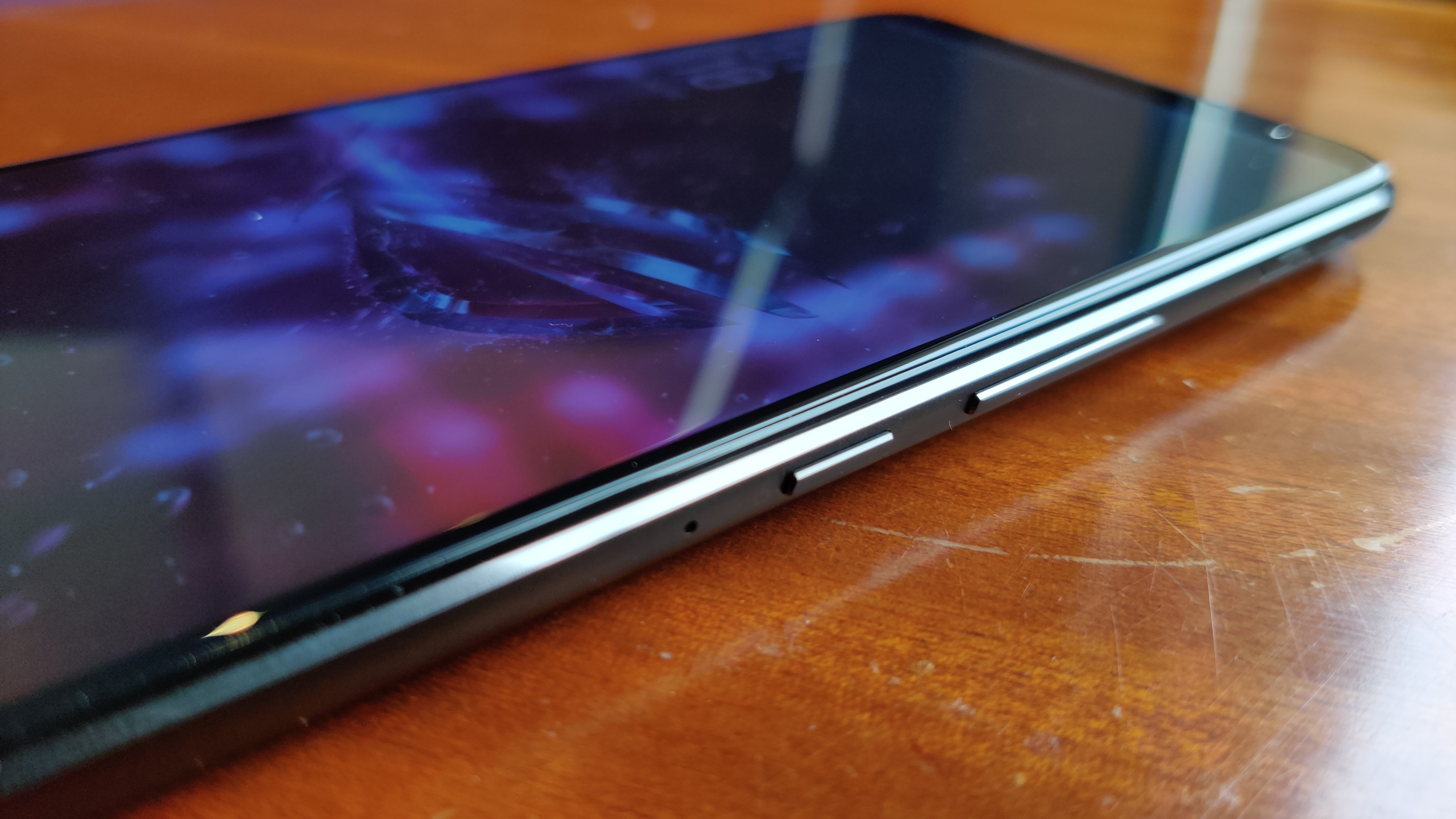
Underneath the glass back, circuit-like lines run along the body of the phone, which shines in different colors of the spectrum as light falls on them. There’s an RGB logo of ROG dead-center on the back which can be controlled via Aura Sync app.
Weighing in at around 240 grams, the ROG Phone 2 is on the heavier side of things, and with a maximum thickness of 9.48mm, it isn’t the sleekest phone to carry around either.
The right edge of the phone is home to Air Trigger II, which are two touch-sensitive areas that act as shoulder buttons.
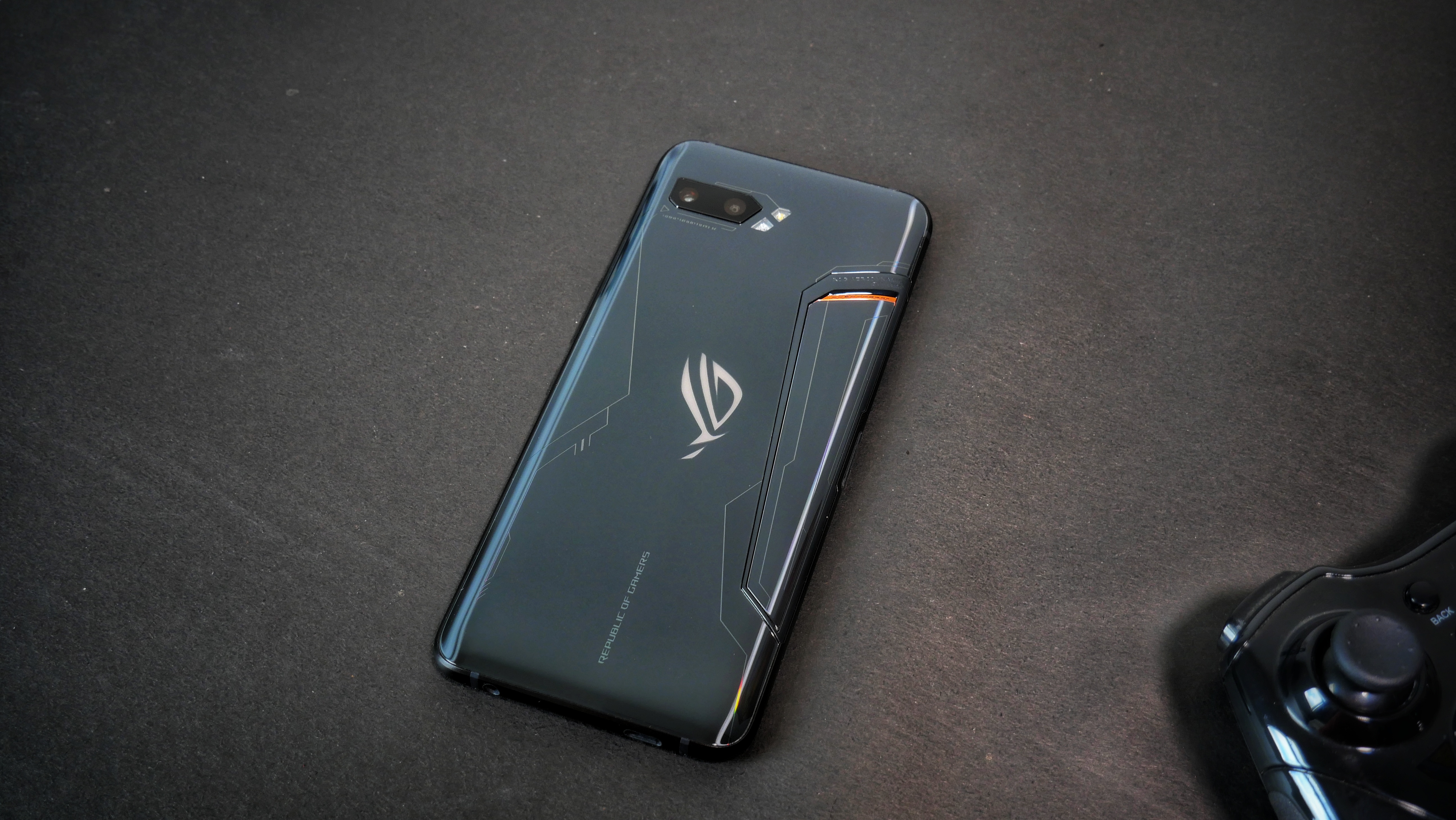
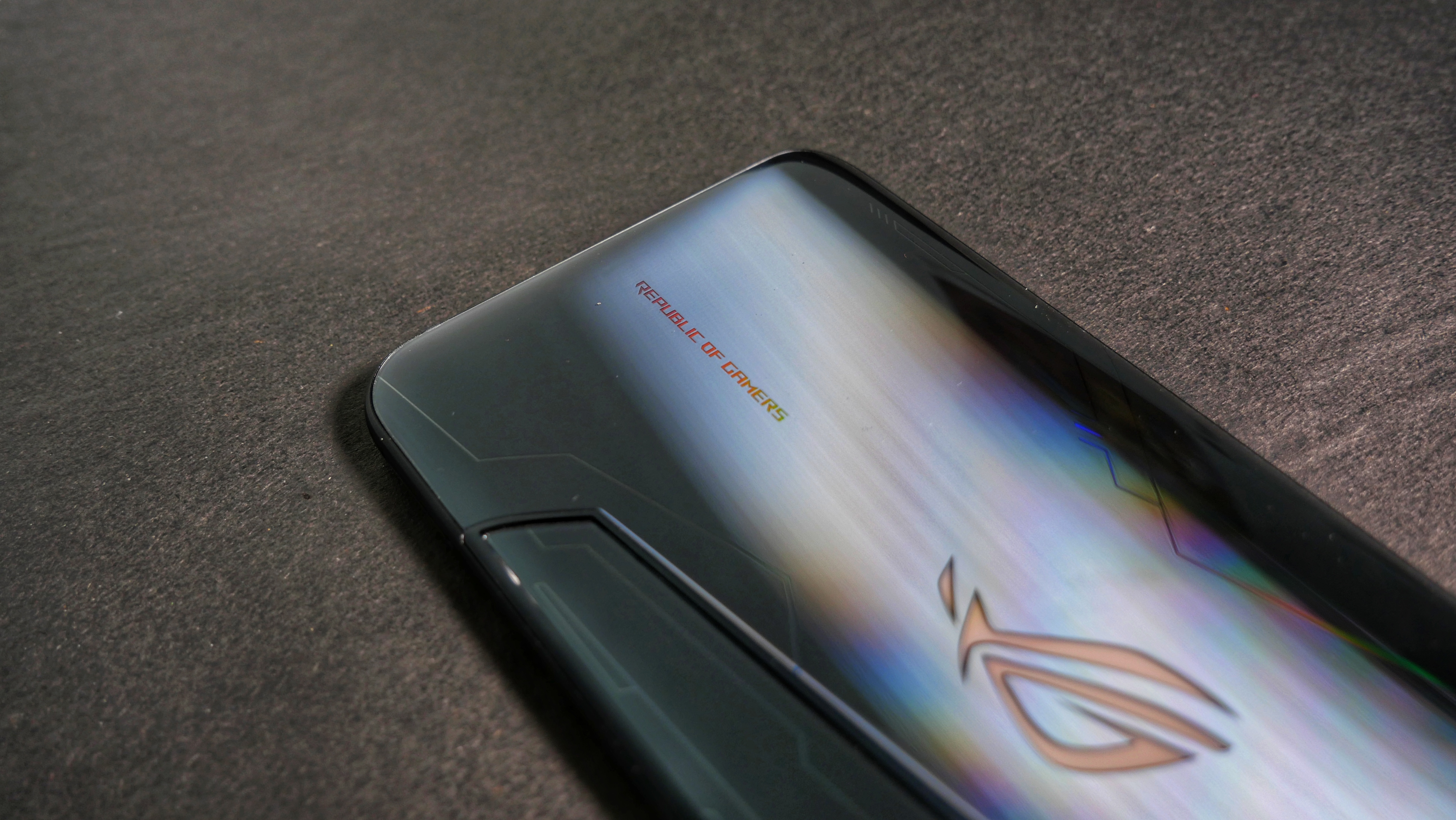
Overall the Asus ROG Phone 2 design is improved over its predecessor, and it does have a premium look and finish. The heft is certainly not favorable for daily use, but as a hand-held gaming device, it’s a trade-off gamers will likely be able to accept.
Other is due to the presence of a cooling system; the phone isn’t certified for use near water. The ROG Phone 2 looks futuristic with its design, and there’s no doubt about it. However, it is slightly bulky for daily use, so you might want to check it out in person before placing an order.
Display
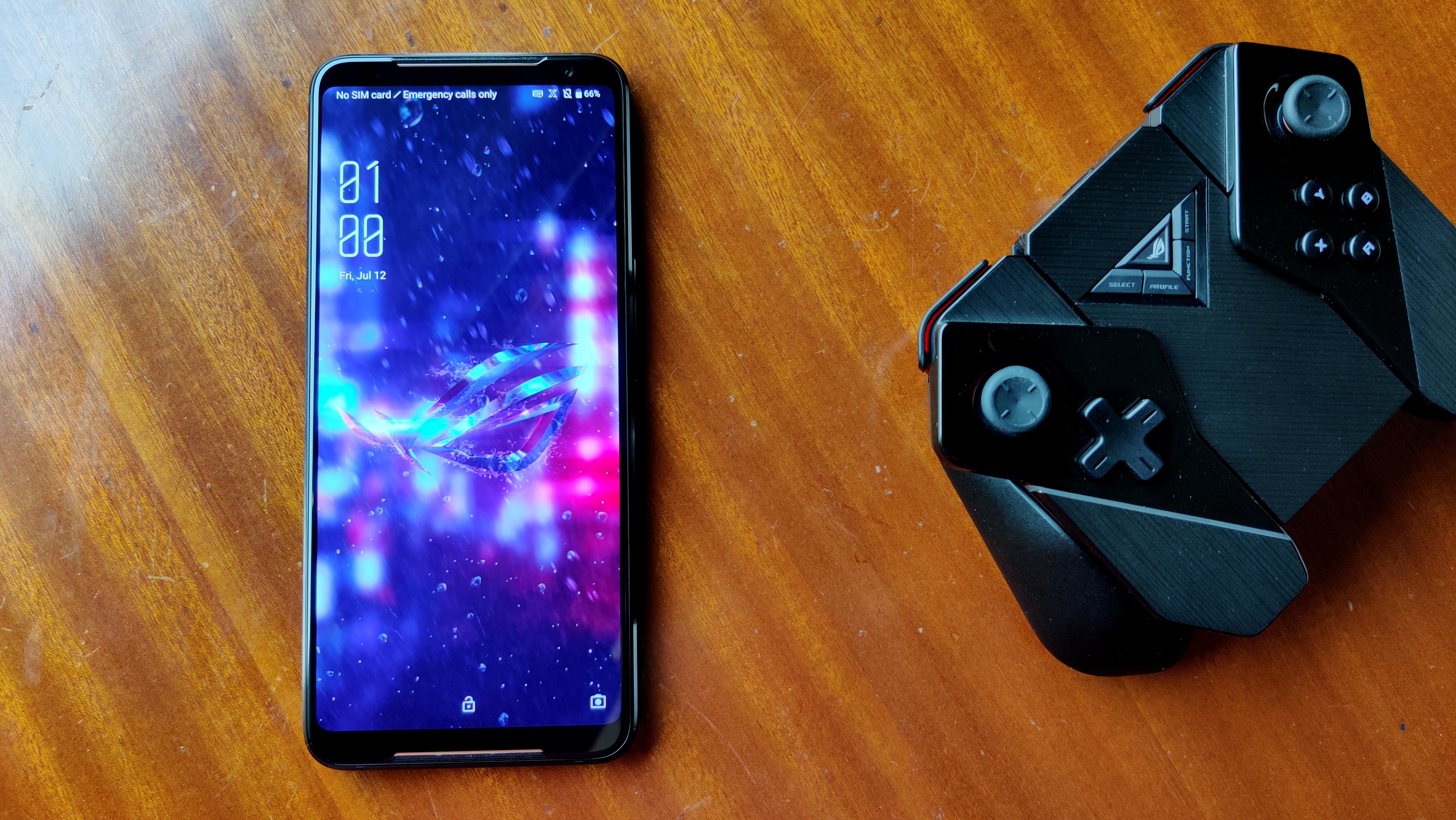
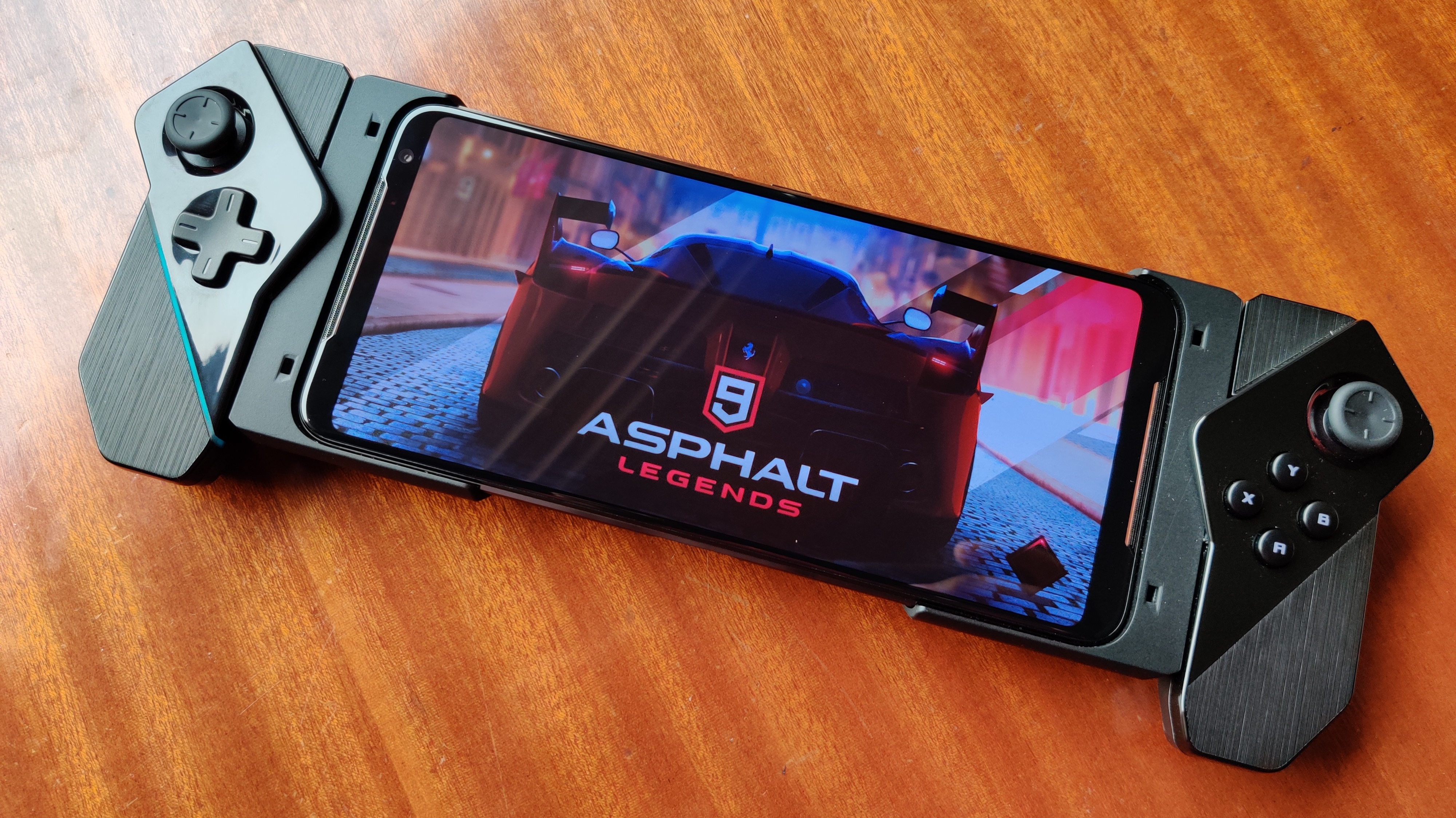
The front has noticeable bezels around the screen, which gives it a 19.5:9 aspect ratio. Asus believes that a full-screen display brings in uninvited touch inputs along the edges, so the bezels provide a space to rest fingers without them interfering with the action on-screen.

Another benefit of the top and bottom bezels is that they provide space for dual-stereo speakers and four noise-canceling mics. As for the fingerprint scanner, the sensor is under the display.
With a 6.59-inch AMOLED display boasting a Full HD+ (2340 x 1080 pixels) resolution, the ROG Phone 2 provides more play area than the original ROG Phone.
The refresh rate of the display has been bumped up to 120Hz (from 90Hz) with a one millisecond response time and 240Hz touch response time - the first smartphone to feature this.
The screen can reproduce up to 108% of the DCI-P3 color gamut and is also 10bit HDR certified. Asus engineers have calibrated the display to a Delta-E number of less than 1, which isn’t immediately noticeable to the human eye. A low Delta-E value indicates that the colors are closer to each other on display.
The display is slightly directed towards the red tones but is accurate with vibrant hues and crisp details. It wouldn’t be wrong to say that the ROG Phone 2 has one of the smoothest and accurate displays in the smartphone market right now. It means that your gaming and viewing experience, including watching movies, TV shows, and other such content looks great on this screen.
The on-paper specs translate into a high-end screen to play games on as the higher refresh rate makes for a superior viewing experience that’s as good for gaming as it is for content consumption. Beware though, once you’re addicted to that 120Hz refresh rate screen, there’s no going back!
Camera
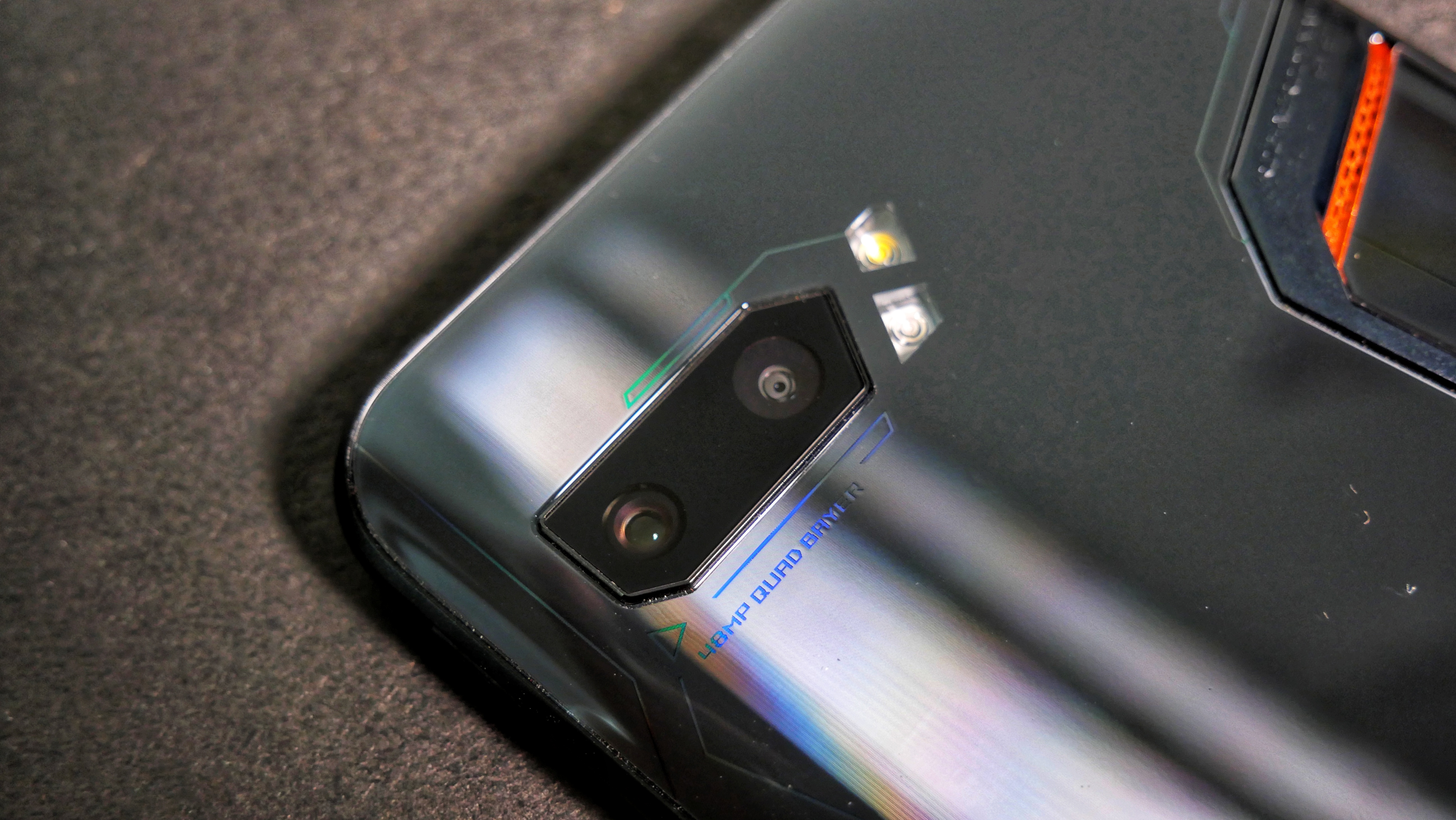
Asus seems to have left no stone unturned to make the ROG Phone 2 a decent smartphone as well. It has a dual-camera setup on the back consisting of a primary 48MP camera that uses Sony IMX586 sensor and a 13MP secondary ultra-wide lens with 125-degree field-of-view. On the front, there’s a 24MP selfie camera.
Asus ROG Phone 2 comes with the same camera setup that we have previously seen on the company’s Zenfone 6Z (or 6Z for India). The cameras support 2x optical zoom and up to 8x digital zoom capabilities that come in handy when taking a picture of an object at a distance.
The ROG Phone 2 takes good pictures in daylight with a generous amount of dynamic range and sharp details. However, in low-lit environments, the camera produces images with more noise and less sharpness. The night mode fixes that to a certain extent only, but we see this as a decent performance in our books.
Pictures shot from the ultra-wide camera often looked washed out, and it takes a bit of editing to get the color profile right. There was minimal barrel distortion at the edges, and overall, the pictures looked decent.
Besides, the camera can create attractive portrait pictures without noticeable distortions on the edges. At times when the object in focus isn’t stable for the photographs, the portrait mode algorithm can mess up the edge-detection, but it isn’t very often.
Additionally, the phone’s camera system is supported by a 3-axis electronic image stabilization and is capable of recording up to 4K at 60fps from the primary camera with 720p slow-motion recording at 480fps.
Overall, the ROG Phone 2 sports brilliant cameras as far as gaming phones go and if you like taking pictures after playing games, this one isn’t going to disappoint.
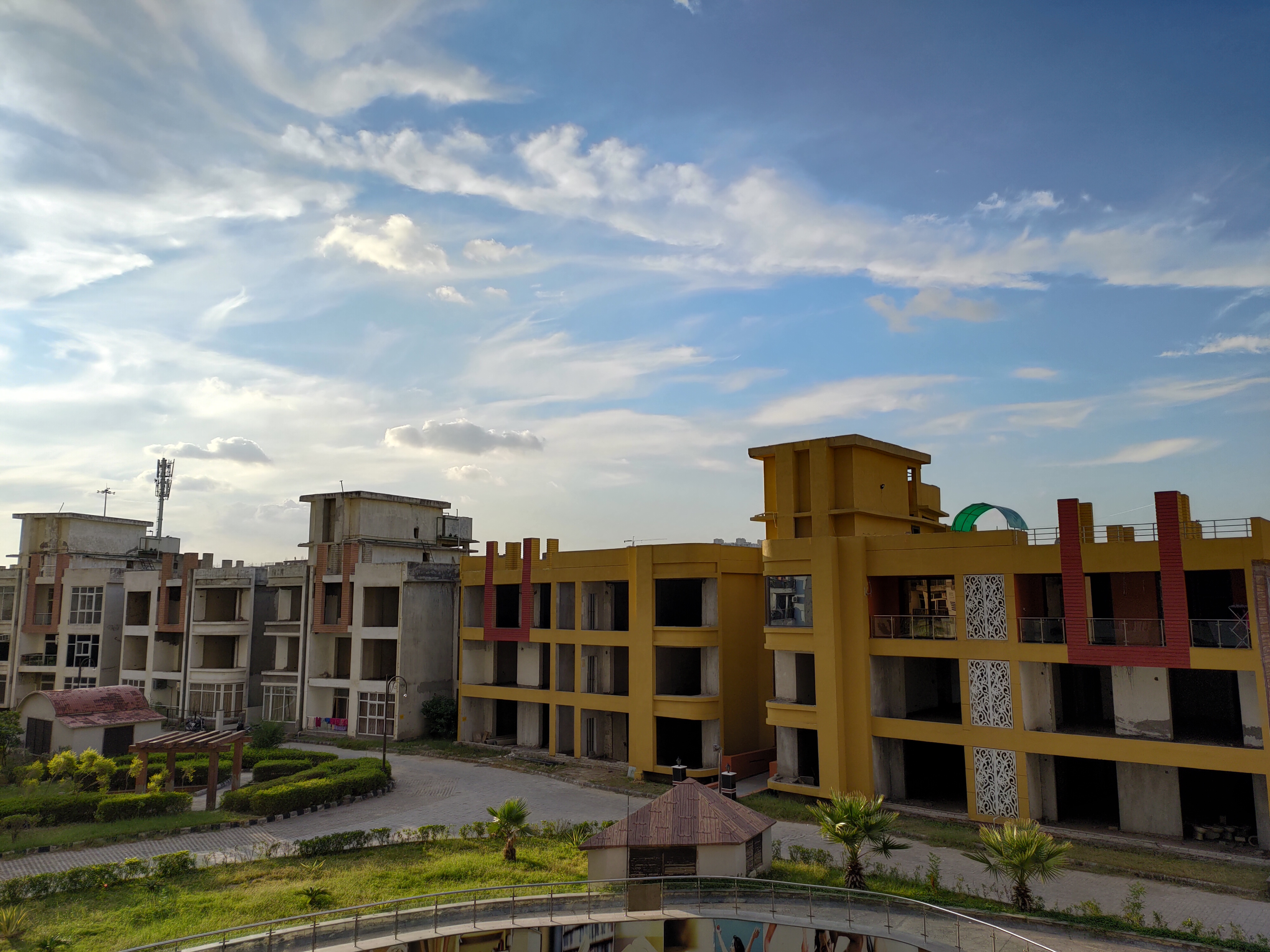

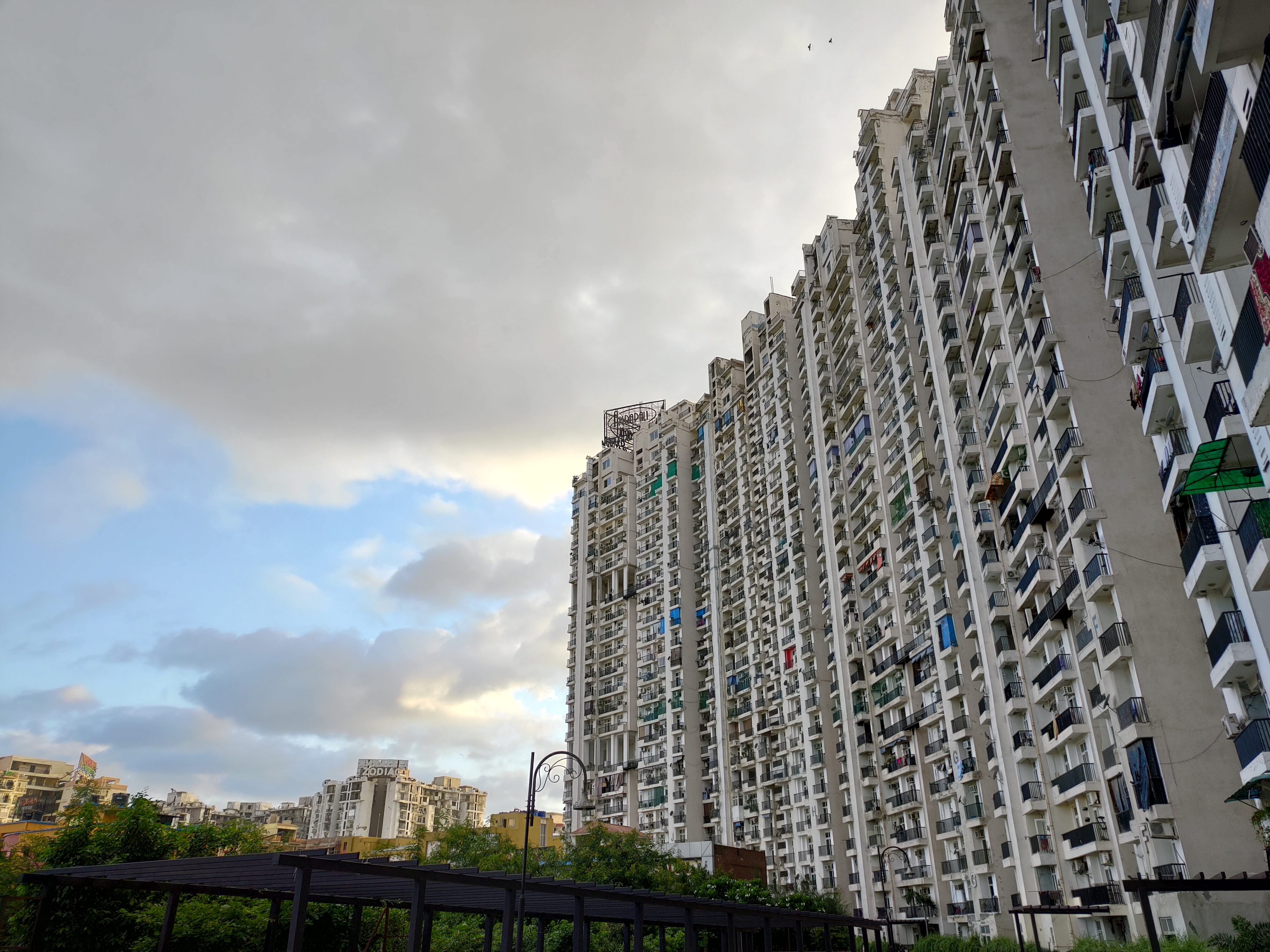
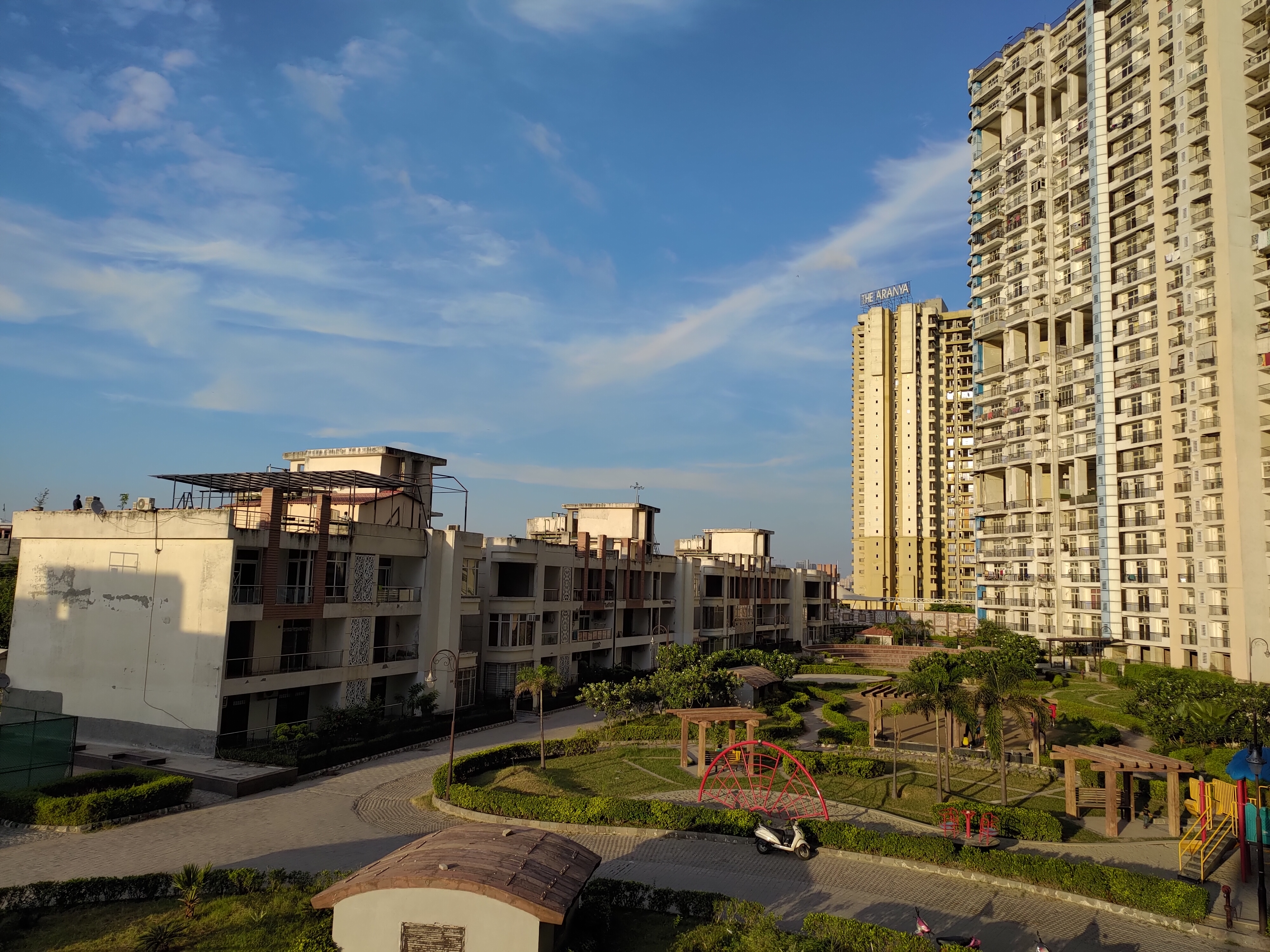
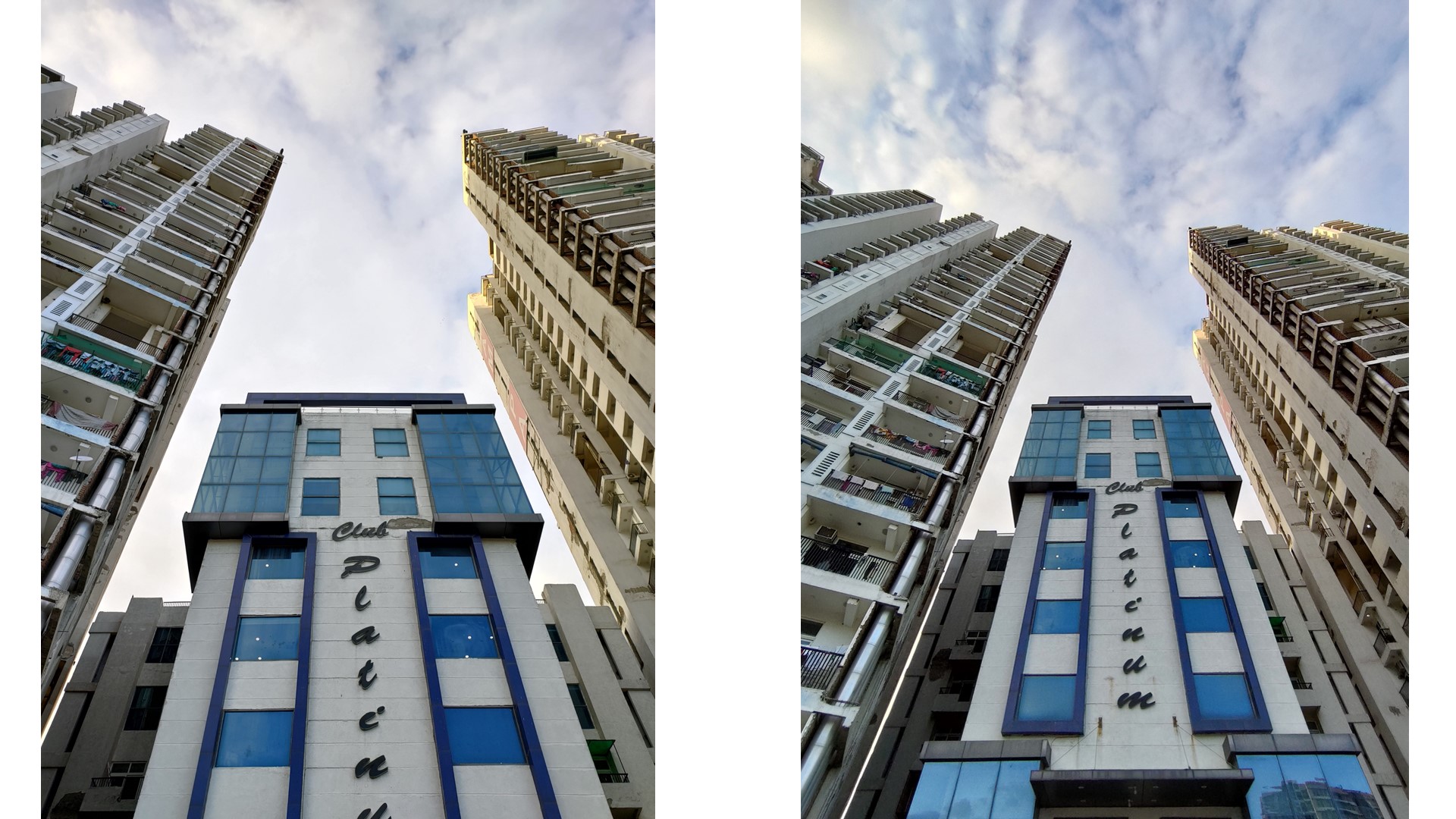
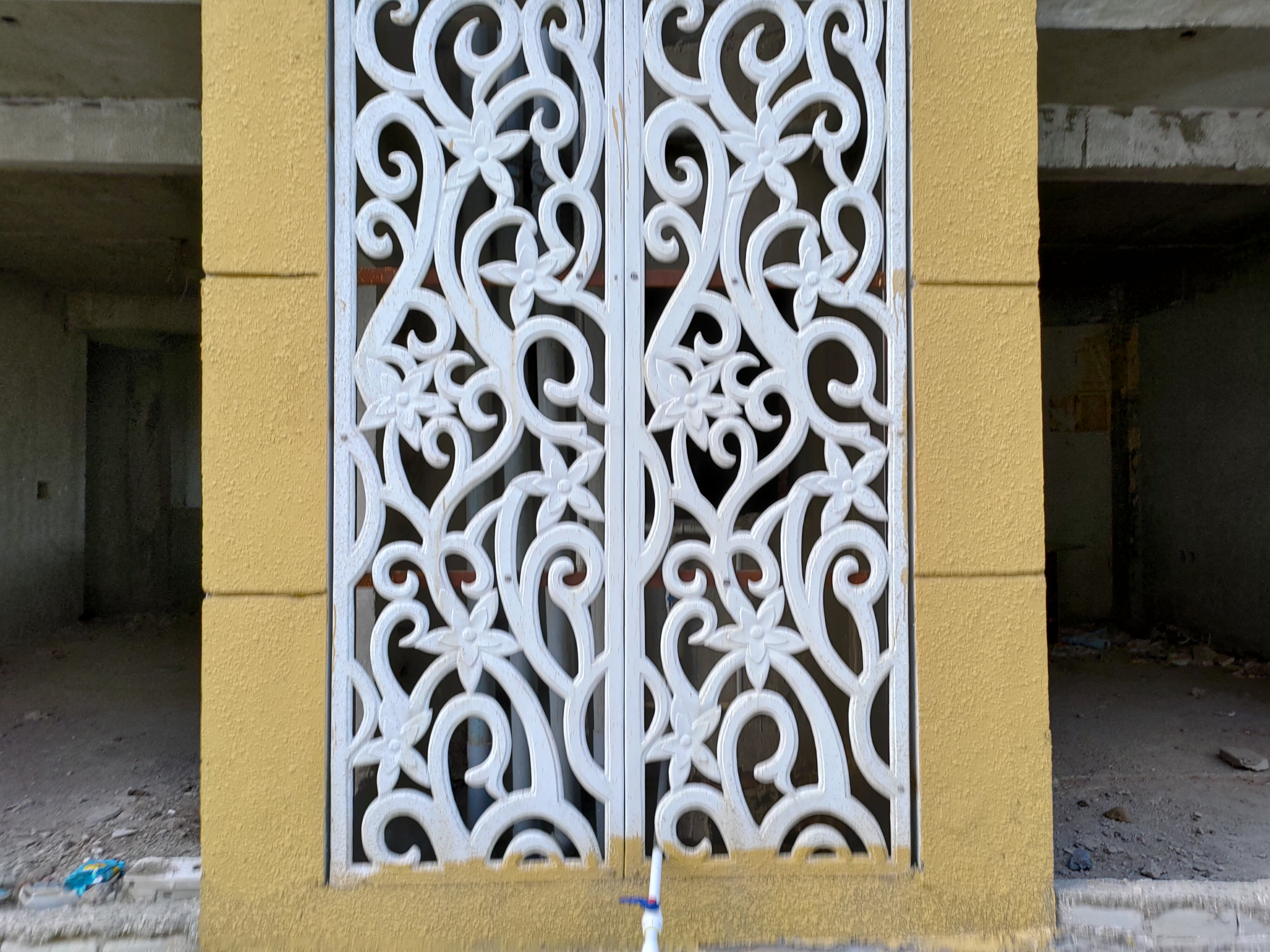

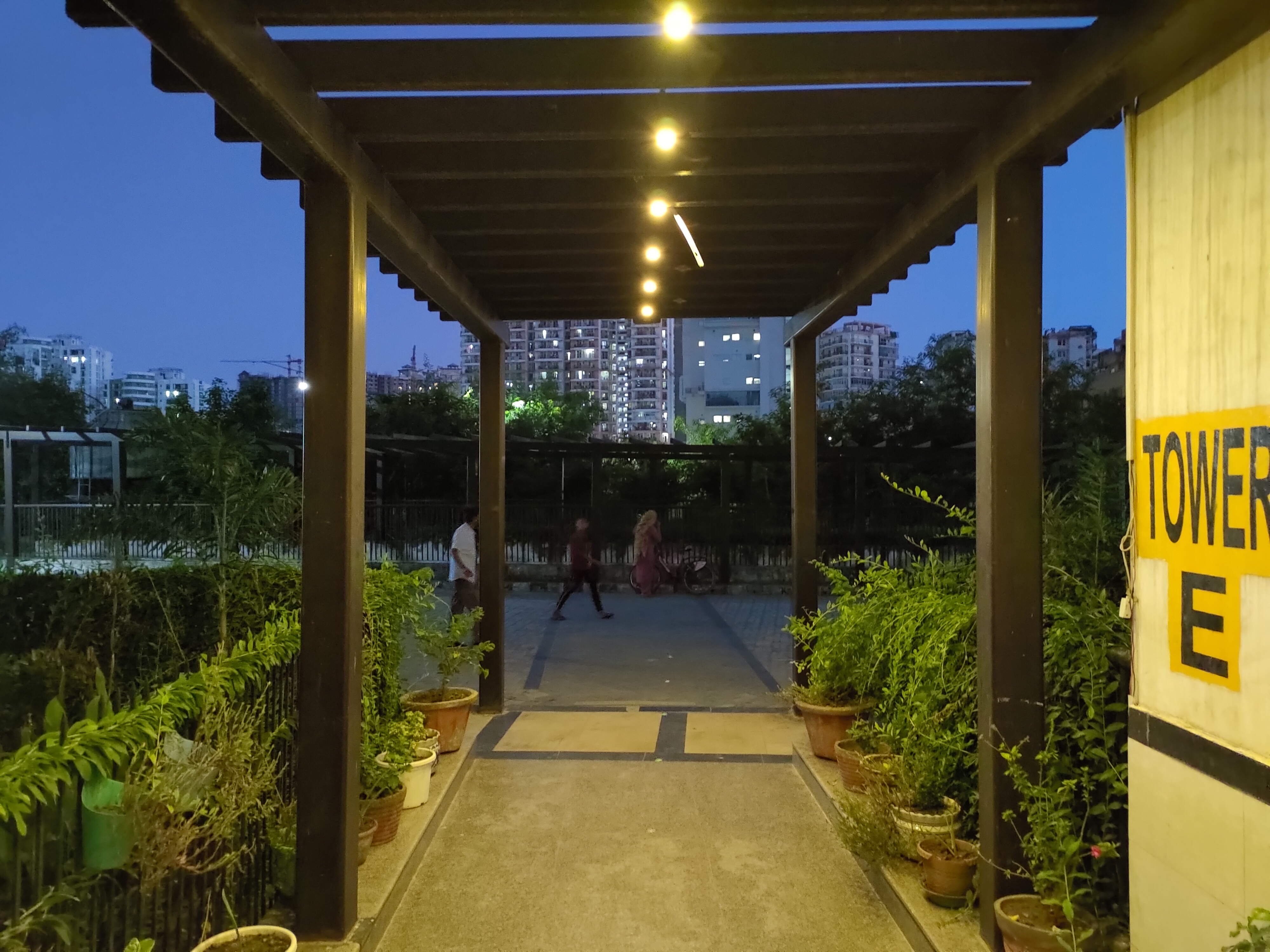
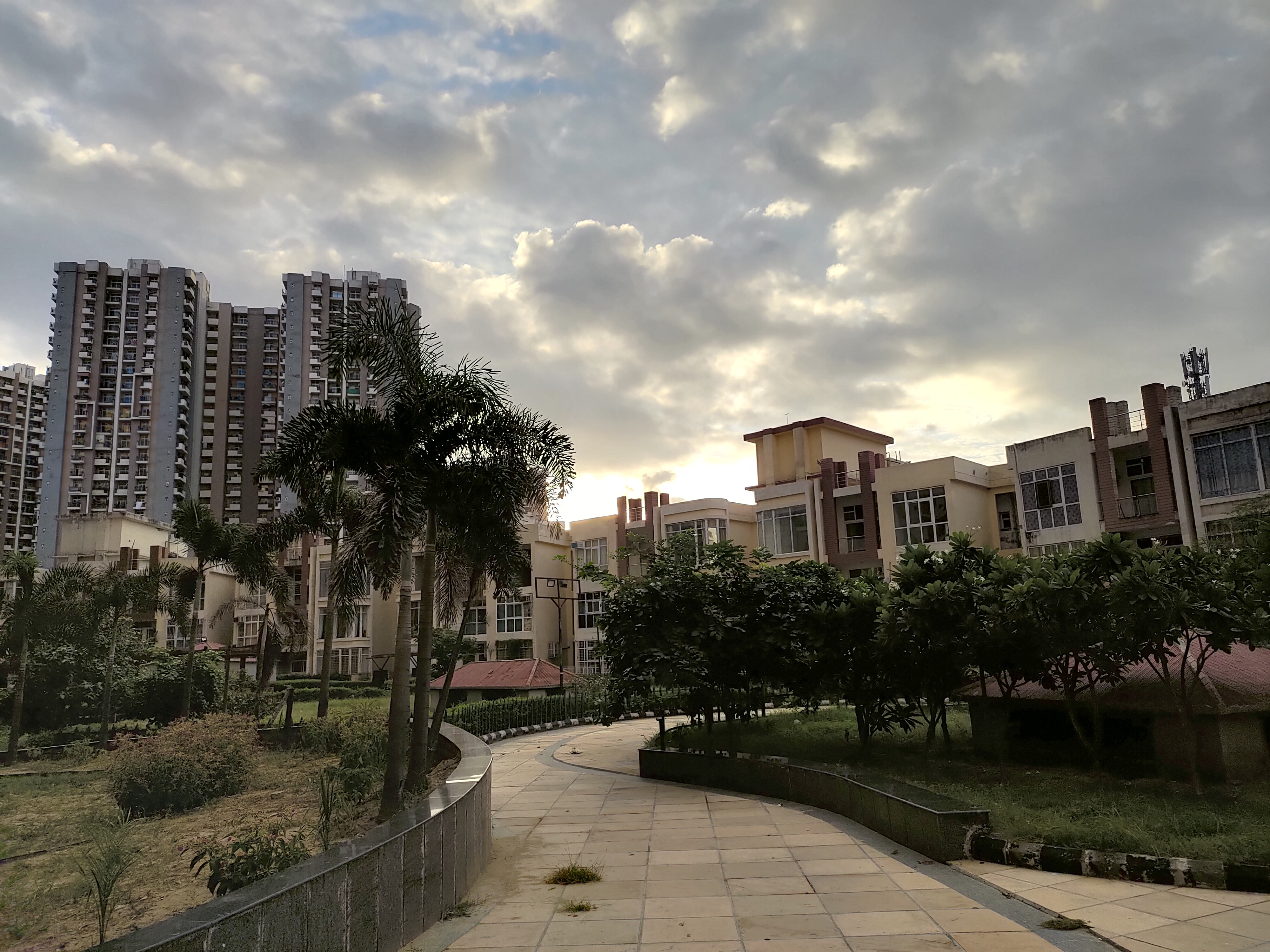


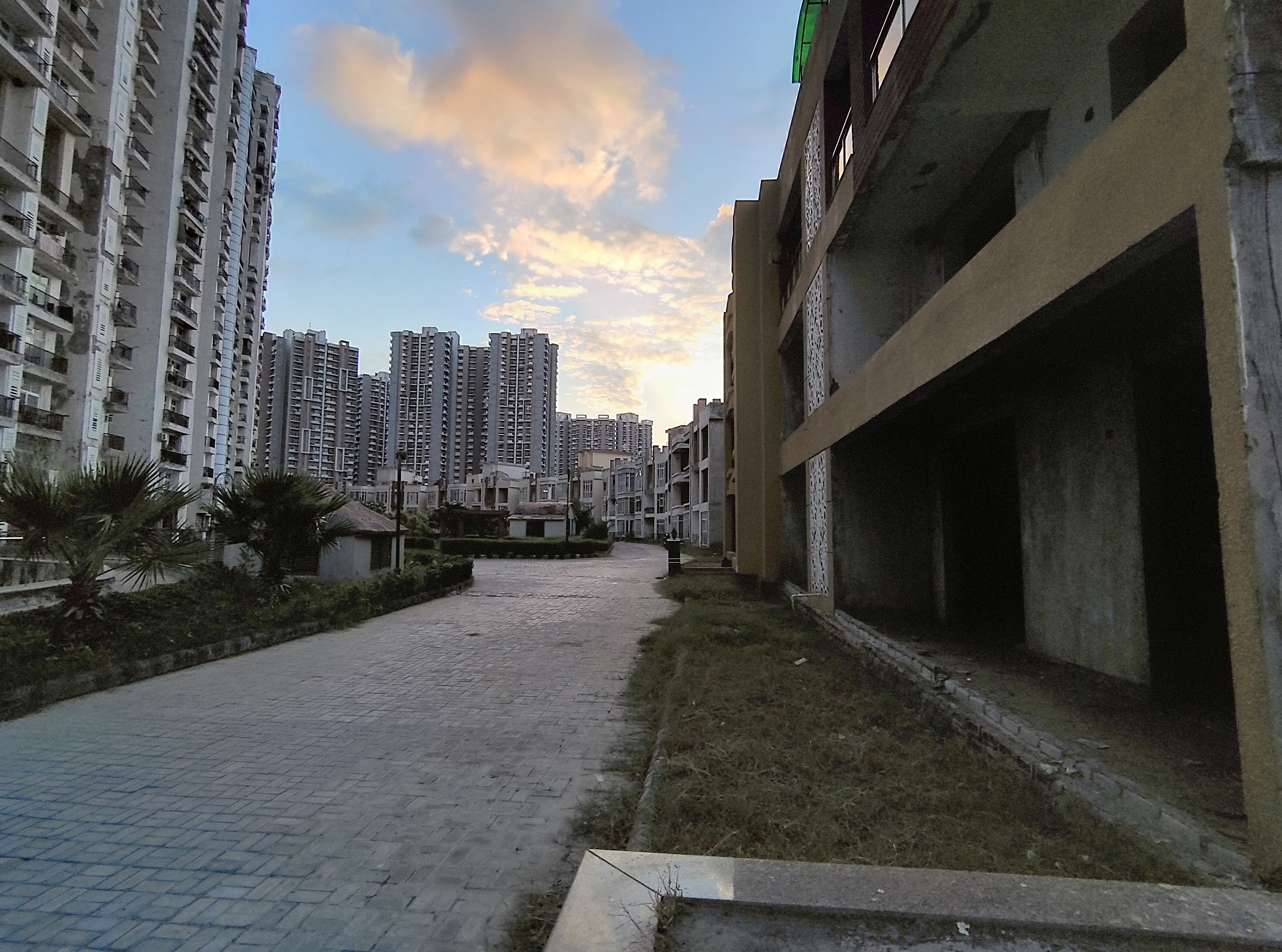
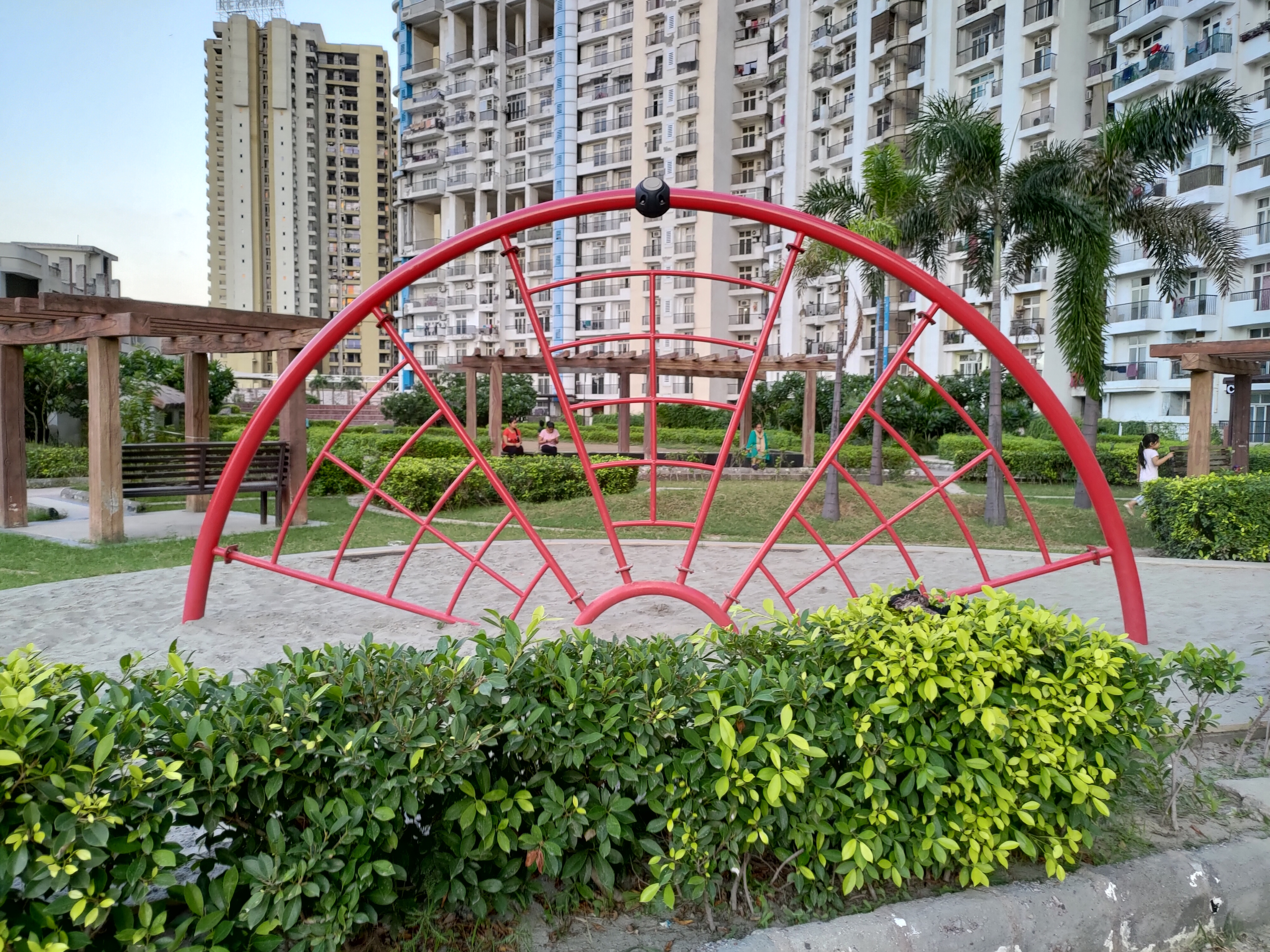

- 1
- 2
Current page: Overview, Design, Display and Cameras
Next Page Under the hood, Battery Life and Verdict- Siddharth Chauhan is the Consumer Technology Reporter at Digit India. He used to work as an Assistant Editor at TechRadar India

